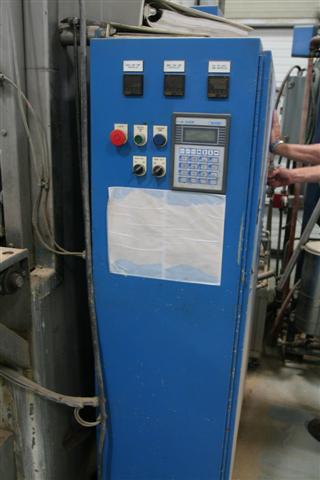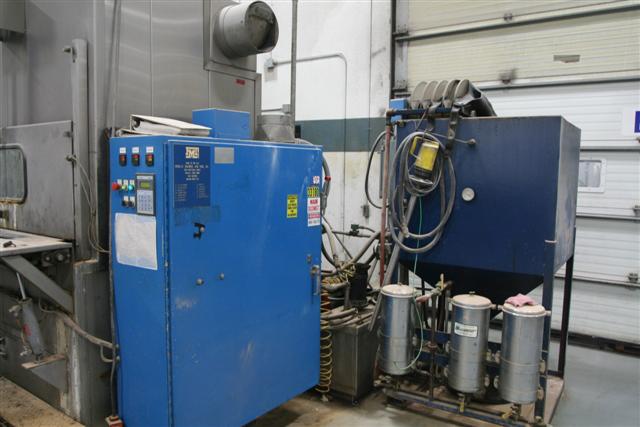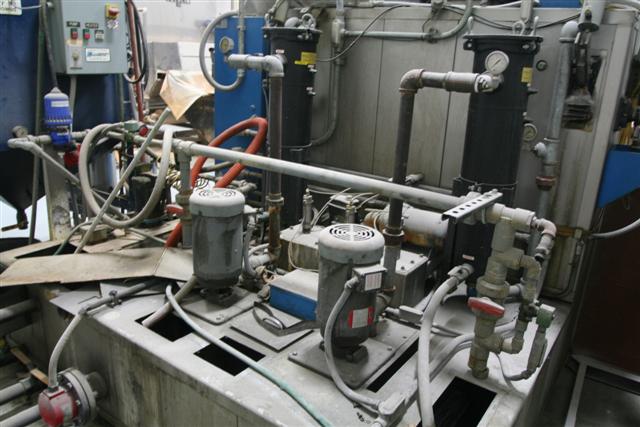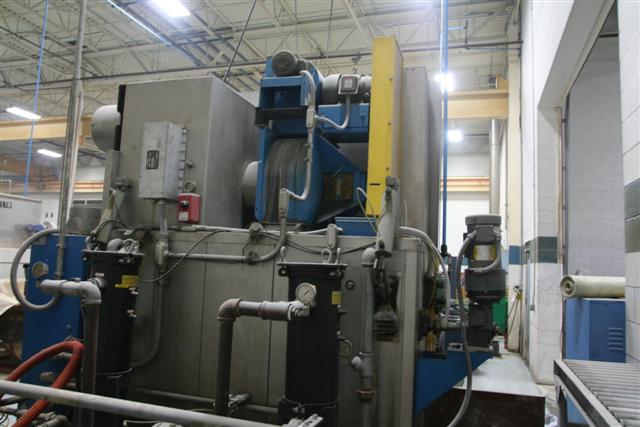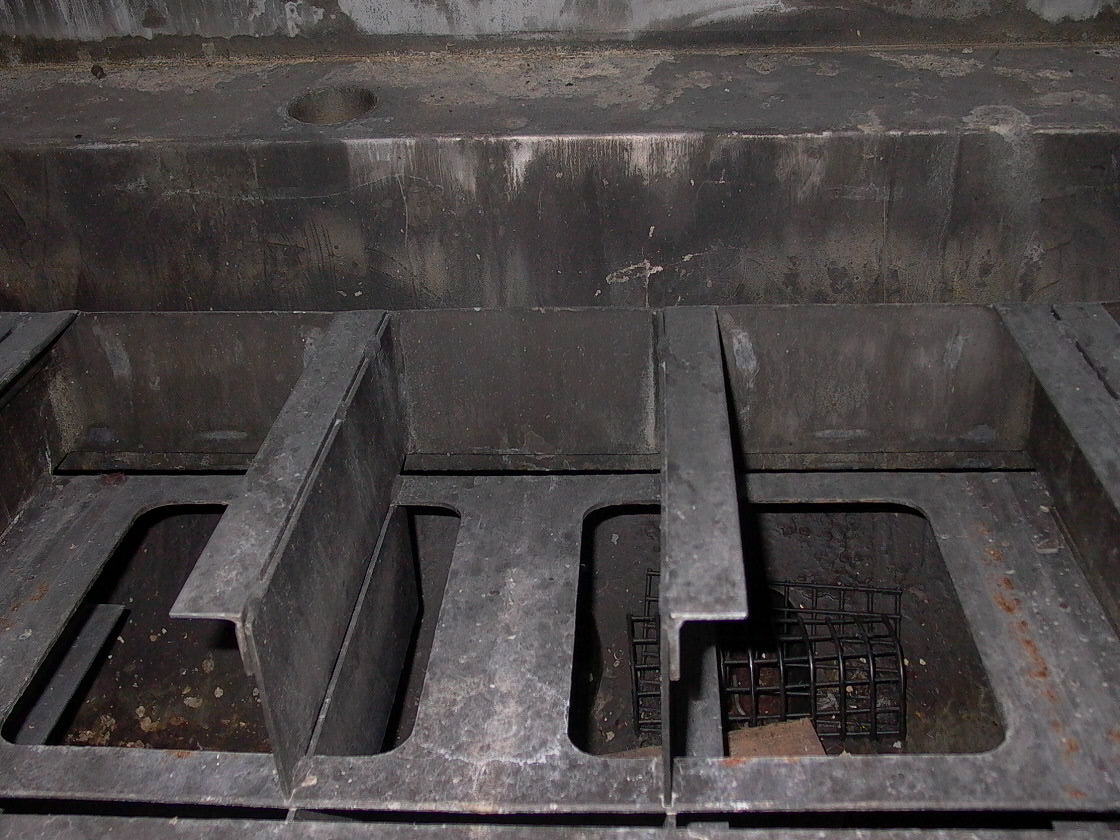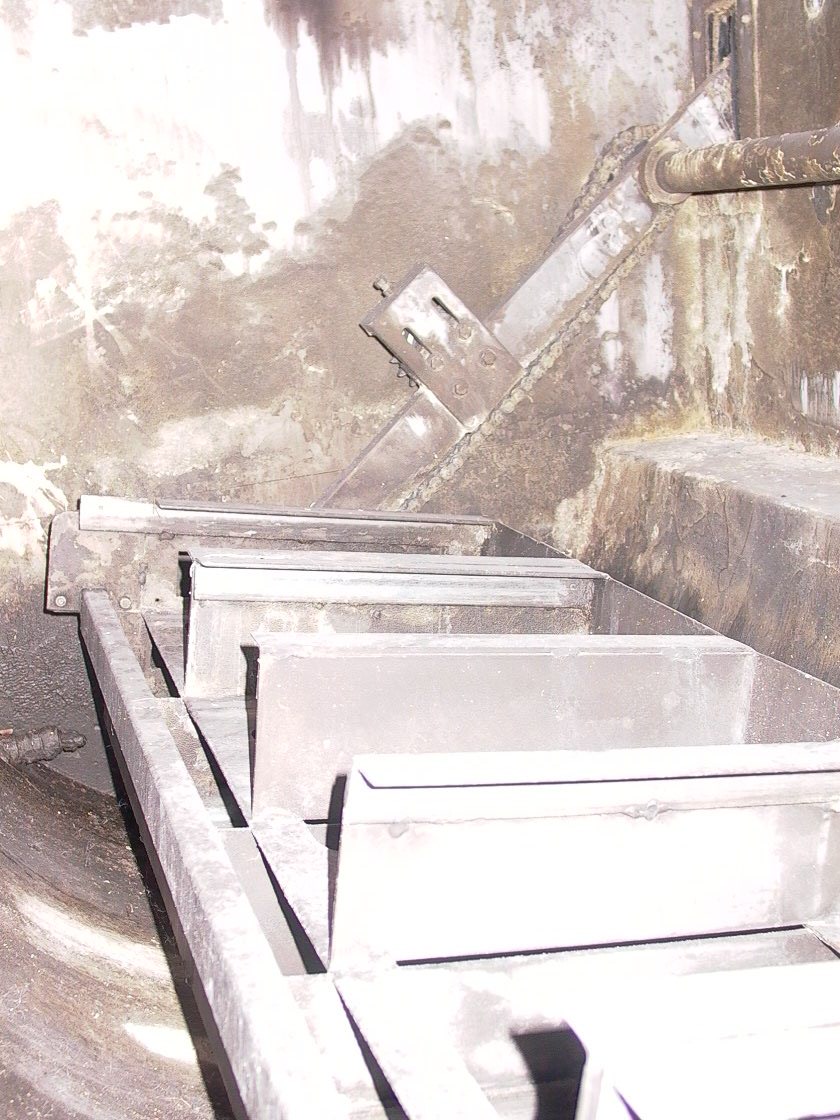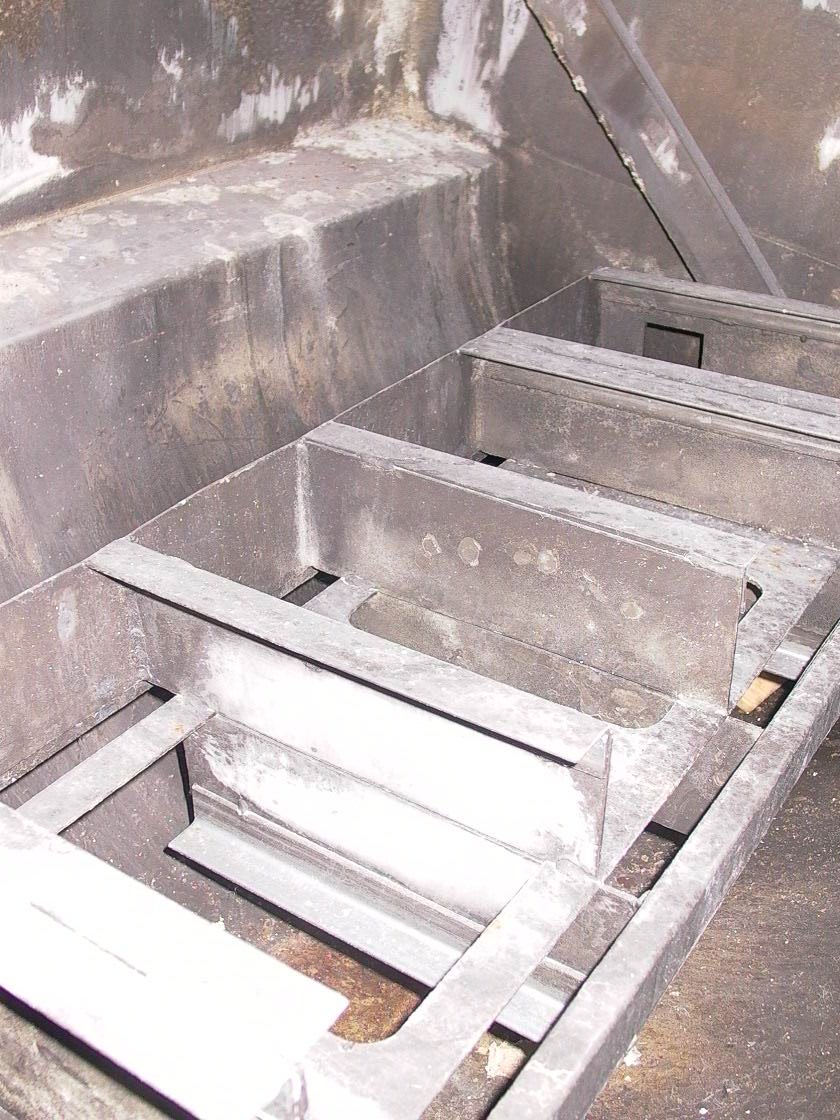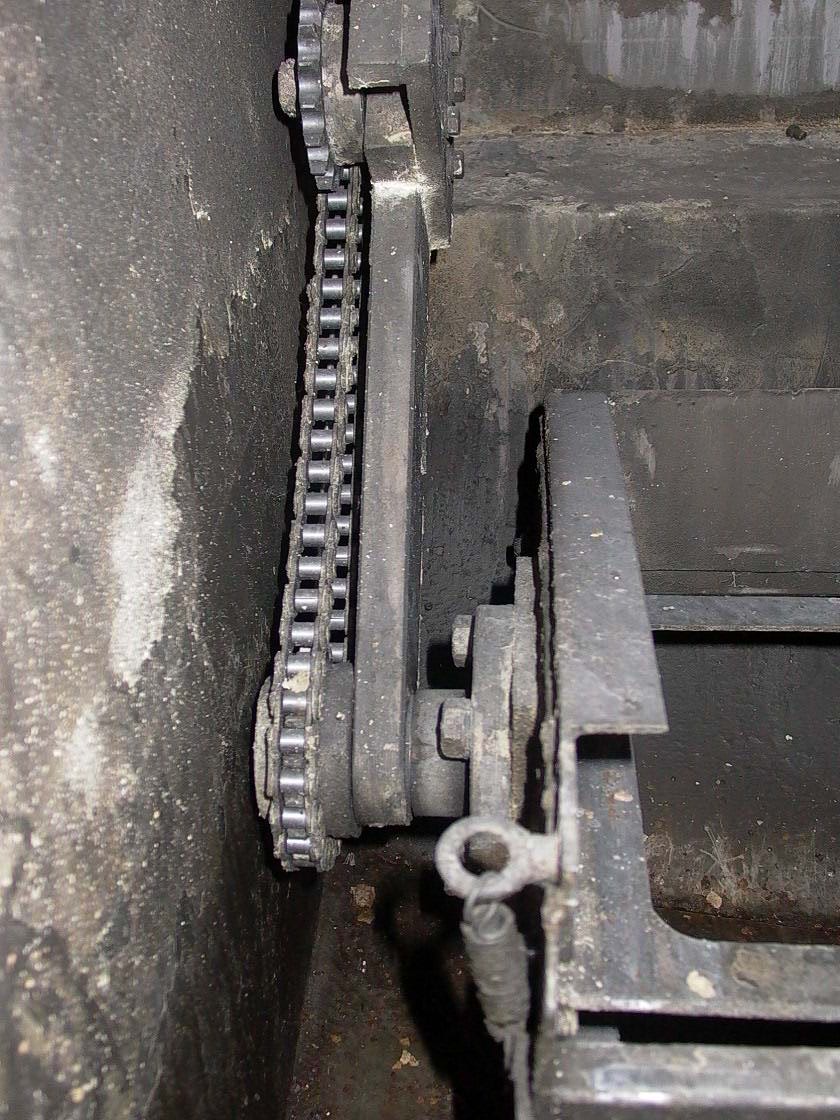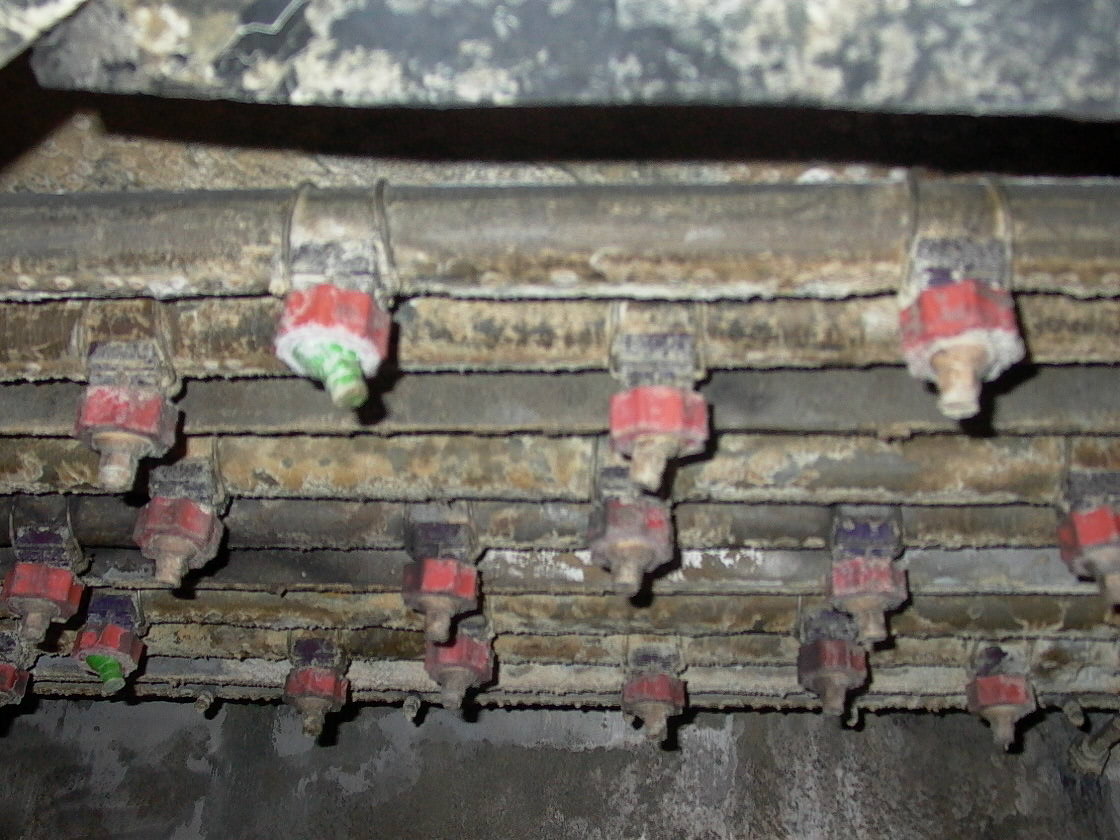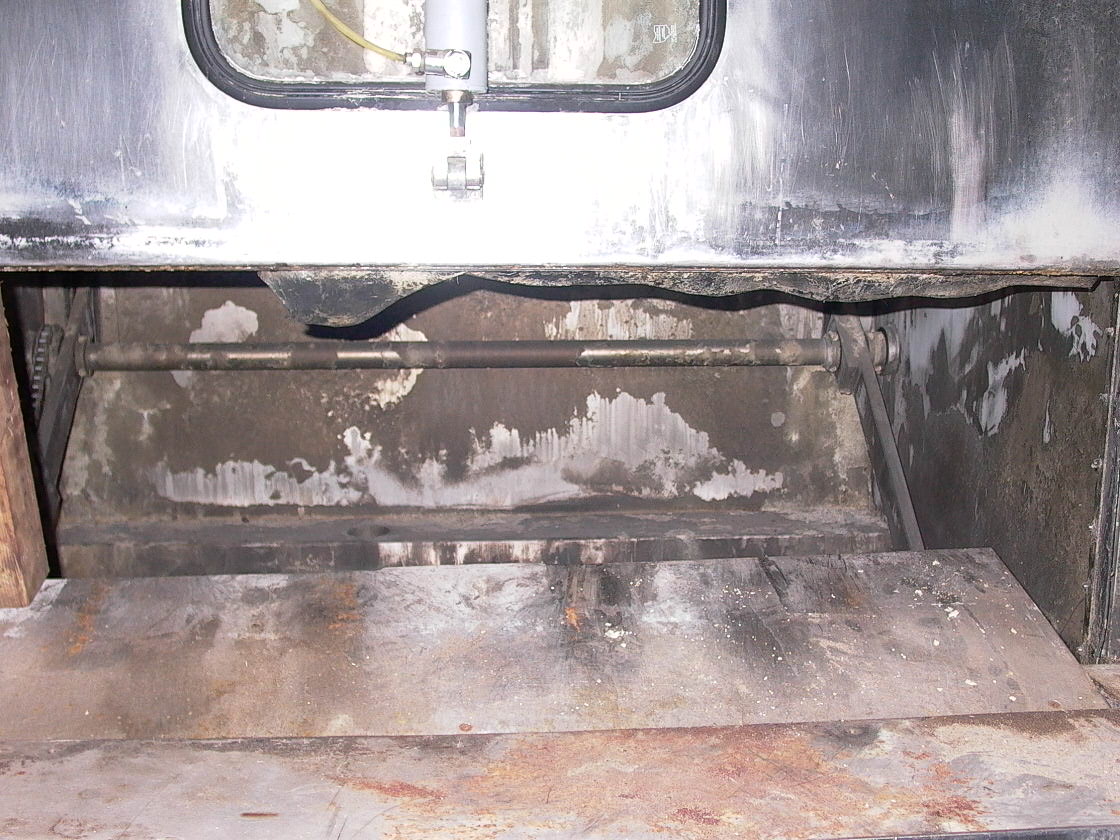Specifications
Equipped With
The 4RB50 is simple to use. The operator loads parts containers into the rotating fixture, secures them in place and depresses two palm buttons. The door closes and the process sequence begins.First, the parts are automatically lowered into the process basin. As fluid is introduced through high volume spray headers, it passes over and through the parts as they are gently rotated in their fixture. The spray continues, filling the process basin with fluid. A dedicated turbulation pump is energized introducing a high volume of wash fluid through the parts. During this phase, the process basin is continually overflowed, filtered and re-circulated. The optional ultrasonics would be automatically activated during the washing stage to remove difficult soils or process complex geometry parts. During the ultrasonic phase, process pumping and rotation are reduced, maximizing the cavitation activity. Near the conclusion of the wash cycle, the fixture is automatically raised from the process basin.The spray is maintained for a short time longer to remove re-deposited oils or debris.
At the conclusion of the wash, the basin is drained, returning the wash solution to its reservoir. Next, high velocity filtered ambient air is directed through a series of air knifes, over the parts, to strip off soapy wash fluid. After the blow-off is complete a city water or DI spray is briefly activated. This spray acts as a step to further minimize rinse tank contamination and extend the life of the rinse solution. An optional catch tank and transfer pump is available. Using this, the "gray water" is collected, stored and automatically used to make up for evapotative losses in thewash tank. Upon completion of the wash cycle, the rinse cycle begins.
At the start of the rinse the parts are again automatically lowered into the process basin. As fluid is introduced through high volume spray headers, it passes over and through the parts as they are gently rotated in their fixture. The spray continues, filling the process basin with fluid. A dedicated turbulation pump is energized introducing a high volume of rinse fluid through the parts. During this phase, the process basin is continually overflowed, filtered and re-circulated. The optional ultrasonics could be automatically activated during the rinse stage to ensure removal of wash fluid or through application of a trust inhibiting agent for complex geometryparts. During the ultrasonic phase. Process pumping and rotation are reduced, maximizing the cavitation activity. Near the conclusion of the wash cycle, the fixture is automatically raised from the process basin while the spray is briefly maintained.
At the conclusion of the rinse, the basin is drained, returning the rinse solution to its reservoir. The DI spray can be activated at this time for a final rinse, ensuring spot free dry parts later on. Again, the optional catch basin could be employed to recycle this "gray water" for future use.
During the drying step an exhaust fan is first energized. The exhaust fan is first energized. The exhaust fan removes moisture laden air from the spray cabinet interior. It has a self balancing damper to regulate the amount of filtered ambient air returned. As the mist is exhauseted, it travels through the mist collector and is returned to the cabinet as liquid, reducing water usage. An optional mist reducer is available to furthur remove exhaust moisture. It may allow venting of the system directly into the plant, avoiding costly roof penetrations. This removal of mist from the cabinet area helps to expeditethe drying efficiency and its process. As mist is being exhausted, high volume, heated air is introduced into the process cabinet area via a series of air knives. After the drying cycle is complete, parts continue to rotate during a brief cool down cycle. To conclude, baskets are leveled and the door automatically opens. The operator is free to remove the parts and prepare the next load.


